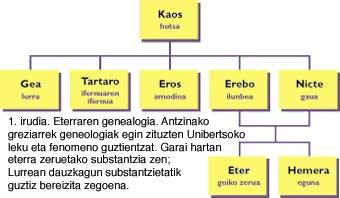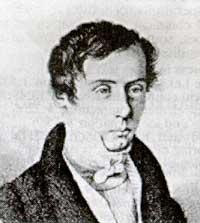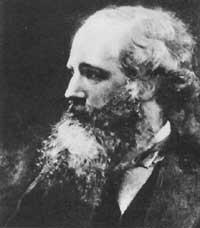Physics XIX. In the 20th century (and III)
1999/03/01 Bandres Unanue, Luis Iturria: Elhuyar aldizkaria
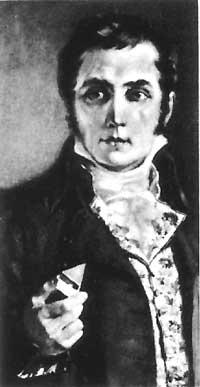
Thermodynamics
In 1824 the Frenchman Sadi Carnot stated that all thermal machines need a hot body or any heat source and another cold body or condenser, and that when working the machine the heat passed continuously from the hot body to the cold body. Carnot wrote down the idea of energy conservation. However, over the years his work was not well understood because he was put on the caloric ground. According to this, it was admitted that the heat passed through the machine without varying the number and that the work was obtained by the decrease of the temperature, as when the water passes through a turbine.
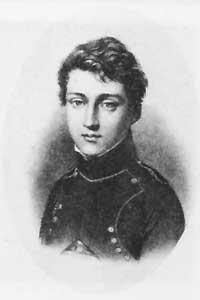
Carnot observed that to study the laws of thermal machines it was necessary to start from the simplest case, that is to say, that one had to investigate a cycle of machines without any friction and without heat loss, and that the substance used (steam, compressed air or any other), after going through different situations, had to pass to its initial state. Part of the work done otherwise could come from the internal energy of the substance, so the work done would not be entirely due to the cause of the heat passed by the machine.
Clausius and Thomson gave Carnot's cycle theory the aspect we know today. On the other hand, the work done by Joule allowed us to know the equivalence between heat and work. And that one can become another or vice versa. However, they immediately realized that although a fixed number of tasks can become total heat, in the reverse process it is not reached 100%. They saw that only a part of the heat used in steam and other thermal machines was transformed into work, without the other part being necessarily converted into heat.
Based on this idea and work, Thomson, who would later become Lord Kelvin, invented the natural or absolute temperature scale that bears his name today, that of Kelvin degrees. Earlier, through an essay by Meyer, Joule turned the work into heat using air compression. But Joule, by the way, also concluded that the air, by letting it dilate without working, did not undergo temperature changes.
All these steps in thermodynamics had some consequences, on the one hand, they provided solid bases for the development of thermal machines and, on the other, they strongly promoted and channeled the advance of physics and chemistry in different directions. Faraday transformed chlorine into liquid by means of a very fine instrument, just as other researchers managed to make all gases liquefied. Thus, it was demonstrated that all subjects can appear in three situations. In 1898 Dewar managed to blend hydrogen. The thermos we currently use to keep hot drinks comes from glass containers with vacuum chamber designed by Dewar for testing.
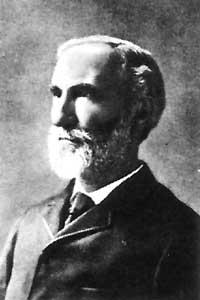
To be able to work effectively through heat a temperature jump is necessary. Whether the temperature difference is eliminated, or whether heat is transmitted by conduction, convection or radiation in Nature, so that when changes occur in the isolated system in a single sense, its capacity is less, so the mathematical function that Clausius defined as "entropy" is increasing. When the working capacity of the heat energy reaches its minimum limit, entropy reaches its maximum, which allows to obtain equilibrium conditions of the system. In building the theory of physical and chemical balance this century, along with Clausius and Thomson, we have Holmholtz, Gibbs and Nernst.
The first law of thermodynamics claims the conservation of energy. The second tells us that the energy trend is increasingly degraded. With these two ideas and extending them to the whole universe, it was intended to deduce that the energy of the cosmos is constantly becoming heat, that as the temperature jumps were smaller, it was becoming increasingly difficult. That is why XIX. The physicists of the 20th century announced that in the future, after transforming all the energy of the universe into heat and expanding it evenly, no other modification could be made. However, this means, among other things, that the rules observed in a limited area are applicable to a more complex one. But all this brings us to another field of knowledge.
Theory of light
XIX. Another ancient theory that resurrected in the early twentieth century was the wave theory of light. XVII. In the eighteenth century Hooke and others defended it in some way and Huygens proposed it more precisely, but his opposition to Newton and his opinion on the subject was of great weight, so Huygens' proposal was not considered. Newton had two reasons to put aside the theory of waves of light: on the one hand, it did not represent the phenomenon of shadows well, since if the light were a wave like that which makes any wave (for example the sound), it would envelop the opaque bodies and, on the other hand, the waves that vibrate in their direction of propagation in the phenomenon of the double refraction observed in the Icelandic spur were not represented. These difficulties were resolved by Young (1773-1829) and Fresnel (1788-1827) giving the wave theory its present aspect.
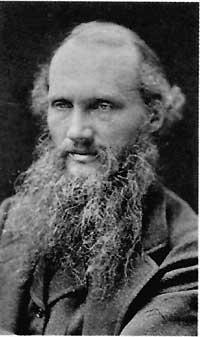
Young passed the white light through two holes made with a needle on a screen and looked at the exposed on another screen behind. At the points where the rays of the two holes of the second screen coincided, a large number of dark and bright colored bands were periodically observed, caused by the interference of the analogous waves of the two beams of light. When one wave reached the screen it had an average wavelength difference from the other, appearing the dark that linked the tip of one to the bottom of the other, while when the summits of both coincided, the intensity of the light doubled and bright colors appeared. Replacing the white light composed of a single color light (frequency), instead of the colored bands appear alternately the brightness and darkness of that color.
The dimensions of the device and the width of the bands showed that wavelengths of different colors can be found. It is estimated that the wavelengths were very short, two thousandths per millimeter, and that the measurements of the obstacles that light finds in its path were very high compared to its wavelength. Therefore, light spreads in a straight line and the phenomenon that appears when surrounding an obstacle, now known as diffraction, is very small.
Newton's second difficulty was solved by Fresnel. Hooke hypothesized that the vibrations that once formed light spread in the direction of the rays. Fresnel assumed this hypothesis and was able to clearly express the phenomenon of the double refraction that was presented in the Icelandic spittle.
Fresnel mathematically developed the theory of light waves more accurately. In reality, and after recognizing that some problems were still pending, it can be said that, in general, his theory was adjusted to the observed phenomena. Fresnel himself and his followers XIX. In the eighteenth century the classical wave theory of light was completed and rounded.
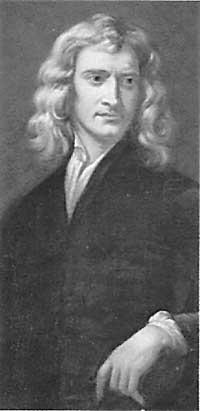
But if light is the wave, that is, if it is a mechanical wave movement, it is necessary a material means for its propagation, but while it was not known, it was proposed and accepted the help of the "ether" to take its place. Due to the particularities of the luminous waves, the characteristics required by this medium are not presented in liquids or gases, but in solids, so it was not seen that the ether should be rigid. In parallel, an extensive theory of the elastic strength of the ether was initiated. On the other hand, light came from the Sun through the ether and within that rigid ether the planets moved without any impediment: how could it be? XIX. In the first half of the 20th century it was a great challenge for physicists. To put all this in common, the existence of gyrostatic ethers was also proposed, but the statement comes in another way: that the ether is not needed.
Faraday had to prove that electromagnetic phenomena occurred in space, in vacuum. Later Clerk Maxwell (1831-1879) found that light was only a type of electromagnetic wave, thus the resistance of this ether collapsed. The first chapter of what is now known as "field physics" is the wave theory of light; the second, Faraday and Maxwell wrote the theory by combining light with electromagnetism; the third, the theory of gravitation to geometrically represent Einstein's gravitation, but this is totally alien to the time frame of these lines.
Electric waves
In the prosperity of the result obtained by Faraday we can see his incredible intuition. When an electric current diverts the magnetic needle into space or causes the electromotive force to appear in another circuit, we must think that there is "remote action" without expression or "something" that acts as a means of transport in the intermediate space. Faraday followed the second path and invented the concept of the lines of force, which came from some points and went to other points and so he could draw that influence.
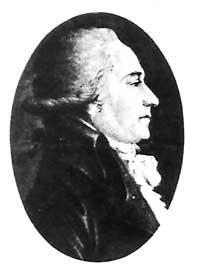
Maxwell gave Faraday's ideas a mathematical attire knowing that the electric current generated a magnetic field in which the magnetic force was perpendicular to the current and, considering that the changes in the magnetic field generated electromotive force, it became quite clear that the electric and magnetic forces were completely united. Therefore, when dielectric polarization is propagated in an insulating medium, it propagates as an electromagnetic wave. In this expansion the magnetic and electrical forces are perpendicular to each other in the plane of the wave front of the expansion. Maxwell discovered the differential equations leading these waves. According to these, the speed of the waves depended on the magnetic and electrical characteristics of the medium.
Maxwell himself and other physicists calculated the speed of these waves. It was discovered that it was about 30,000 kilometers per second, like the speed of light. Maxwell concluded that light was nothing more than an electromagnetic phenomenon and that it would be an ether, although its wavelengths were different, as these two phenomena were actually the same.
At this time the problem of the nature of electromagnetic waves became apparent: electromagnetic waves were regarded as a mechanical wave that vibrates in a semi-rigid solid (ether), or, although it did not know in depth its final meaning, the nature of light could be expressed through electricity and magnetism. Maxwell was supportive of his light ether, which, in his opinion, in addition to bringing light, would require other electrical requirements.
In England they accepted the consequences of Maxwell, but in Europe they passed almost unnoticed until 1887. That year Heinrich Hertz, through the sparks of an oscillating current of inductive coil, created in space those electromagnetic waves, still merely theoretical. And experimentally demonstrate that many of the particularities of the electromagnetic waves mentioned above were fulfilled. Therefore, the ether, if it existed, would be full of electromagnetic waves, but these waves also spread in the empty space, so the existence of that ether started from the negation of its existence.
Maxwell's theory, including his equations, gave a circular view of electromagnetic waves and, together with them, of electricity and magnetism, but did not express well the cause of the different electric charges used at that time to express the electrolytic experiments performed by Faraday. The concept of electric charge (i.e. atomic charge) after Maxwell's death would be of great importance. The whole theory was rounded up.
Spectral analysis
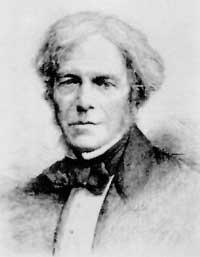
During antiquity and the Middle Ages, the distinction between terrestrial and celestial bodies was clear, but Galileo and Newton abandoned this distinction. Two scientists experimentally discovered and mathematically demonstrated the mechanical laws governing the movements of the bodies of the Solar System, the free falls on earth and the rest of the movements. To make visible the equality between terrestrial and celestial bodies, in addition to demonstrating that their structure and composition were equal, that is, the elements that form the terrestrial bodies and those that intervene in the composition of the Sun, the planet and the stars. XIX. In the middle of the 20th century this problem emerged.
Newton showed in his day that by passing the rays of the Sun through a prism of glass they were broken down into some colors. In 1802 Wollaston discovered the existence of several dark lines in that spectrum of sunlight; then, in 1814, after Joseph Fraunhofer reused these lines, with more than one prism increased dispersion and reviewed and studied in detail the exposed lines.
Moreover, in its day, the XVIII. In the middle of the 20th century, Melvil discovered for the first time that in the light of the flame of a fire contaminated with metals or salts appeared in the dark background special bright colored lines and in 1823 Herchel proposed the reverse path, that is, that these lines indicated the presence of metals. This provoked a lot of observations in which the objective was to visualize and identify the spectral lines of the different elements.
In 1855 David Alter discovered spectra of hydrogen and other gases. Between 1855 and 1863 Von Bunsen conducted several experiments to see the chemical influence of light and in 1859, together with Kirchhoff, invented the first precise methods for spectrum analysis. Through them one could verify the existence or not of chemical elements. Two new elements were discovered: the cession and the rubidium.
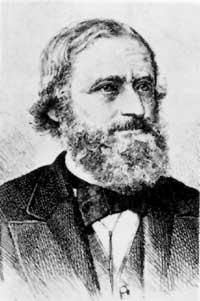
Von Bunsen and Krichhoff went ahead and passed the light from the red sand, which had a continuous spectrum, by a flame of alcohol with common salt and saw the lines discovered by Fraunhofer in sunlight. They did the experiment again, but instead of using salt they used lithium and saw a dark line appearing that did not appear on the solar spectrum. Consequently, it was demonstrated that lithium is not present despite the presence of sodium in the atmosphere of the Sun. From there came spectroscopic astronomy, followed by the development of this new branch of physics.
In 1878 Lockyer discovered in the green part of the Sun's spectrum a dark line that did not correspond to the lines of any known element and therefore generated some unknown element in the Sun. This supposed element was called "helium." In 1895 Ramsay discovered this element in a mineral called “pecholenda”.
During this time it was physically demonstrated that the light and heat of radiation are identical. In 1800 Herschel discovered that the thermometer below the lower red boundary of the solar spectrum received calorific effects. A little later Ritter discovered another much beyond the upper limit of the invisible purple. It was found that the heat of radiation not seen between 1830-40, like light, contains reflection, refraction, polarization and interference. Some physicists accepted the equivalence between emissions and ingestion capabilities: as a black body ingests all radiation, because once heated emits radiations of all wavelengths.
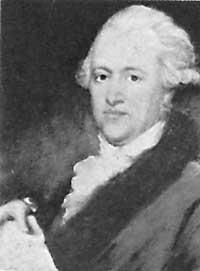
Maxwell had theoretically demonstrated that radiation must be pressed when hit against a surface, and then it has been experimentally demonstrated that such pressure, though very small, exists. In 1875 Bartoli said that by this pressure we can consider the radiation-filled space as the cylinder of a theoretical thermodynamic machine. In 1884 Ludwig Boltzmann theoretically demonstrated that the total radiation of a black body depends on the fourth power of the absolute temperature, then Stefan experimentally proved that this law was correct. This conclusion allows us to affirm that the temperatures of the Sun and the stars can also be measured through the heat energy they radiate.

Gai honi buruzko eduki gehiago
Elhuyarrek garatutako teknologia



